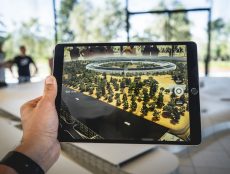
Op-Ed
Live Video Should Not Be Your Default Online Learning Experience
By Cristian Duque
March 25, 2020
Like many foreigners working as teachers in China, James left the country for the holiday season in late December last year. Little did he know his temporary stay in Manila, with nothing but a smartphone next to him, would become indefinite.
This post was originally published by LMSPulse.
The Guangzhou school he works for suggested he set up an online learning environment, where the 50-strong classroom he tackles on a regular basis would now have to be “crammed” into a virtual live classroom.
Little did we know his story would be about a month ahead of the curve. At the time of writing, millions of teachers —literally— all over the world scramble to build “lifelike” virtual classrooms, and like James a few weeks ago, feel dismayed at the proposition.
Working Fast to Maintain Instructional Continuity
For those who are only now starting to tackle, James is one of several examples of how things can play out. And flash-forward to the present, he is also exemplary of the thousands of people who not only have made it happen, but who are working tirelessly at helping others make it happen. Perhaps the first big realization a first-time online teacher has is about the magnitude of the community and infrastructure ready to help them transition.
So how did they made it happen? Not with an LMS, for sure. At least not at first.
Left to their own recourse, Chinese teachers summoned the power of social media. The omnipresent WeChat became the Swiss Army knife. For those with a rudimentary acquaintance of the LMS, WeChat can do it all, with no learning curve, and better: Share files, record video, collaborate through chat. As the height of the lockdown in China hit during the New Year celebrations, many students found themselves in their provinces with limited internet access, often exclusively through smartphones.
James’ school did have an LMS in place, and his class already had some level of acquaintance with it. But a lot of his colleagues did not. As classes were announced to resume, a few weeks time would barely give first-time users the basic understanding of the LMS language enough to equip them with the skills needed to set up courses, built with sections, activities and assessments. But his school wasn’t finished. Days away from reopening, James was expected to set up a live web conferencing room in the LMS to cram his students again. A monumental task for James, someone familiar with the complexities of setting up a web server with multiple CPUs for the web conference tool and integrate it into the LMS —BigBlueButton in Moodle in this case.
Web conferencing isn’t a bad idea, per se.
Some of the advice James got sound disheartening at first. In reality, it’s tough love.
Part of the problem is convincing the school officials that the solution they had in mind —broadcast a class from a phone, 6 hours a day, 3 days a week for at least 2 months— was demanding, exhausting, and downright ineffective.
But the principals’ image is one shared widely by people in education at all levels, including teacher for whom it is a nightmare. WeChat might have played a role in making live video streaming second nature in Chinese society.
You can’t flatten the learning curve while you’re rushing to “flatten the curve.”
In James’ case, Moodle was partially the answer. In emergency situations, you simply cannot develop a “community of practice” framework that provides alignment to several learning interventions taking place in Moodle, dutifully assessed and possibly tracked with the help of a predictive analytics engine. It appears that this round was won by Google Classroom and other “point-and-shoot” EdTech. Whether this jolt would represent a push towards more comprehensive experiences or not, it still remains to be seen.
Do you need a PhD to run an online course? No. Would you be able to craft a comprehensive learning experience within the day with free tools? Also no. The recipe for success is simple: Do as much as you can, ask for help anywhere you can get it, be resourceful, and be realistic.
Other key discoveries
- If a dozen students or more do make it into your live online classroom, lesson #1 will likely be “Mute Button Etiquette.”
- The fact that Moodle is an email-based system seems harmless, but it makes it alien for young students asked to jump into it in masse.
- Most schools, especially in the West, likely have “Business Continuity Plans,” covering natural disasters, but likely not permanent lockdowns or community quarantines. It seems like the perfect time to review those.
This post was originally published by LMSPulse.
Featured Image: Tirza van Dijk, Unsplash.









[…] coronavirus has upended our education system. Around 1.6 billion students have had their schools closed, turning to online learning for the […]
[…] the coronavirus continues to spread, large scale school closings have begun to occur. In response, numerous edtech developers and […]
[…] In the aftermath of the COVID outbreak, it’s definitely clear that schools and districts were ill prepared to move to remote […]
[…] District. “Our systems hadn’t really changed in nearly 100 years, until 2020 when COVID-19 forced us to change. It wasn’t by […]